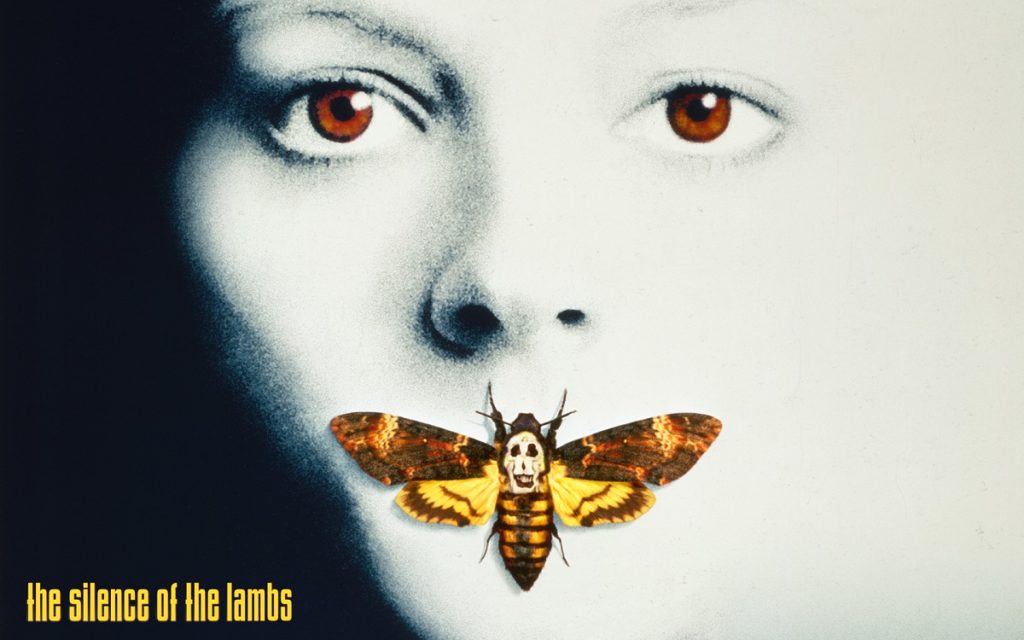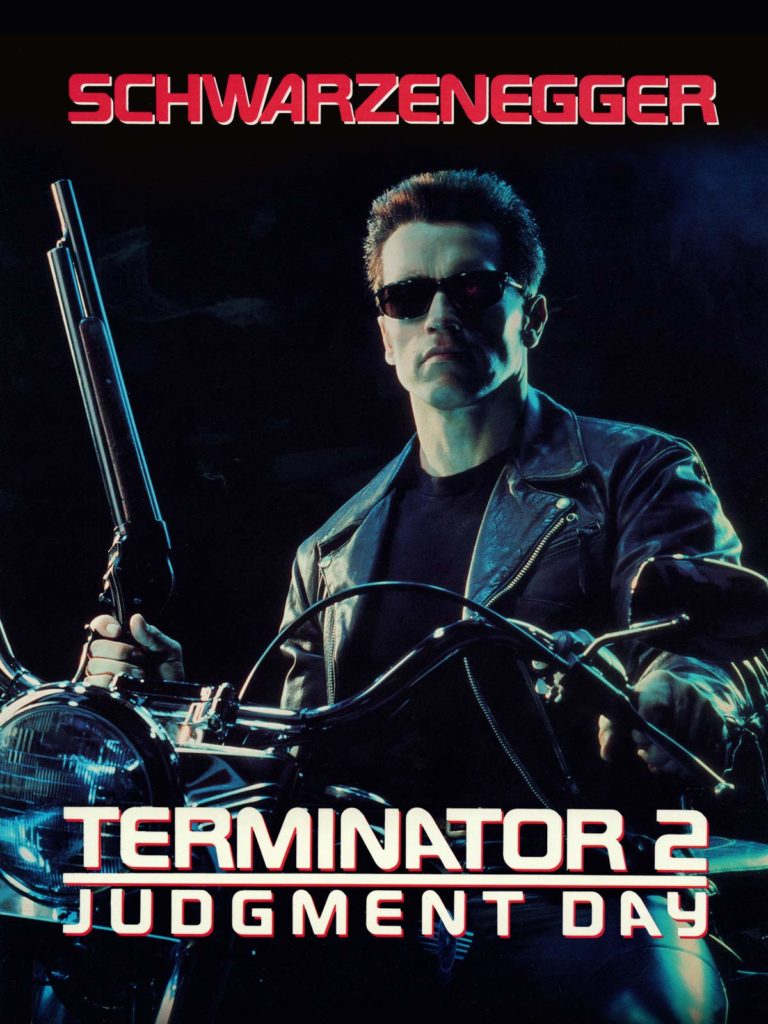1991
Okay I’ll give the 90s this, they are less of a rollercoaster than the 80s were. Moving from Oscar winner to people’s champ and back again is certainly less jarring than it was in the early 80s. Bet that keeps going. Bet that doesn’t shift dramatically in two years.
Welcome to 1991, readers, the year that above all others proves my thesis statement about the Oscars trying to be a bit more populist this decade. Of course competition wasn’t exactly packed with innovative classics: Oliver Stone’s conspiracy movie JFK, Barbra Streisand’s Prince of Tides, Warren Beatty’s mob biopic Bugsy… the most these movies managed to inspire, their respective legacies to arts and entertainment, are the episode of Quantum Leap where Sam leaps into Lee Harvey Oswald and the Seinfeld about the “second spitter,” a brief gag from The Simpsons episode “Selma’s Choice,” and [checks notes] nothing.
(The fifth nominee made a bit more of a splash, we’ll get to it.)
Whereas our Best Picture, while not typical Oscar fare, left an indelible mark on pop culture, and inspired a sequel, two prequels (one good), and an absolutely brilliant TV series from the amazing Bryan Fuller. Which I will try not to fixate on. Movie blog not TV blog, movie blog not TV blog, keep it together… Also while we see the beginnings of Oscar Season this year, since three out of five Best Picture nominees came out on or after December 20th (and a fourth in late November), this one came out in February.
Do you know how hard it is to get Oscar buzz when you came out in February? Oscar voters are like goldfish. Anyhoo…
And The Oscar Goes To…
The Silence of the Lambs definitely feels like an odd duck as a Best Picture winner, so it’s even weirder that it’s only the third movie to win all five of the major categories: Picture, Director (Jonathan Demme), Actor (Anthony Hopkins), Actress (Jodie Foster), and Screenplay (Ted Tally. You don’t know who that is but I named everyone else). It Happened One Night, One Flew Over the Cuckoo’s Nest, and now The Silence of the Lambs.
FBI trainee Clarice Starling (Foster) is sent to meet with infamous psychiatrist and serial killer Hannibal “The Cannibal” Lecter (Hopkins) to gain insights into active serial killer “Buffalo Bill.” Hannibal’s mind games throw Clarice for a loop, but he finds her interesting enough to slip her some clues regardless. Hannibal was hoping to get to this point, and Fuller was hoping to get the great Lee Pace for Buffalo Bill, but even before they got cancelled rights issues over Clarice–no, no, back on topic.
It’s a masterwork of suspense, in the tense confrontations between Clarice and Hannibal, in Hannibal’s third act schemes against confinement, and the masterful final sequence in which Clarice’s confrontation with Buffalo Bob, ending with Clarice in pitch darkness, is viewed through Bob’s night vision goggle POV.
I considered complaining about the extreme close-ups in some of the scenes of Clarice and Hannibal, but the camera work elsewhere was so smooth and precise, I had to ask why I was against extreme close-ups, and realized that I was giving Demme the bill for how Tom Hooper utterly misused the technique in Les Miserables, and that’s not fair. The tight close-ups on Hopkins and Foster give Hannibal’s attempts to dig into Clarice’s brain an intense, off-putting intimacy, and repeating the technique with Clarice and her friend/co-trainee when Clarice locks onto a lead on Bill visually connects the two moments. No type of shot technique is inherently bad, it’s all about how you use them.
Hopkins’ performance is riveting, and even now you can understand how it was so impressive that it made Hannibal an icon, and won Hopkins a Best Lead Actor Oscar despite him only having 16 minutes of screen time in the whole movie. I know, at time of writing I’d literally just watched the movie and already that number seems crazy low, but then that’s what the sequel and two prequels forgot about how Hannibal Lecter works as a character.
Hannibal isn’t Freddy Krueger. The best Hannibal Lecter projects aren’t about Hannibal. Hannibal is what the actual protagonist, be it Clarice Starling or his more frequent (but thanks to this movie less popular) sparring partner Will Graham needs to deal with to catch a different killer. Will or Clarice stalk other killers with some blend of help and hindrance from Lecter. Lecter is not the central character, or at most, it should be a long-form examination of the twisted, complex, love/hate friend/nemesis relationship between Will and Hannibal– no no, stay on topic… The Silence of the Lambs gets that. This is Clarice’s story, she’s the character we dig into as a person, it’s about her work to navigate Lecter’s mind games in order to stop a killer in time to save his latest victim. Her triumph in the end. And Foster does great with it, holding her own against Hopkins’ sneering, superior, confrontational Lecter… who again was good but plays a little… ridiculously cartoonish next to Mads Mikkelsen’s ice-cold, slightly inhuman, but utterly fascinating take on the character in damn it no film blog not TV blog
As to Buffalo Bill… is he a transphobic villain? Well, not exactly, as the movie says in plain terms that Bill is not transgender (although it’s 1991 so they use outdated terms), but… here, I’m-a let a trans writer explain. Read this thread for full insights. Short version, they’re trying very hard not to be transphobic, but got there anyway.
Anyway as a suspense thriller it absolutely holds up, even if the franchise remains a canary in the coal mine where franchises locking in on the wrong character is concerned. As in, the worst Lecter movies are the ones most about Lecter. But this one gets the balance just right.
Side note… Roger Corman is in this movie. That Roger Corman. The schlock king whose B-movie empire launched a few high-profile careers. He acts in this movie. I found that odd.
Side note the second… can’t believe I forgot to flag 1986’s Manhunter last time, the first Hannibal movie, with CSI’s William Petersen as Will Graham and Brian Cox as Lecter.
And Rotten Tomatoes Says: It’s at #26, in a cluster of early 90s prestige pics, and right over Marty and The Bridge Over the River Kwai, and I don’t want to smack-talk Marty because it was good but man it’s the odd one out in that part of the list.
What’s The Real Best Picture? I haven’t seen it myself, but maybe, right, maybe the Academy should have looked harder at John Singleton’s Boyz n the Hood. I bet more people hold that one up as ground-breaking and significant than The Prince of Tides.
The Silence of the Lambs made it to number four at the year’s domestic box office, number five internationally. It did okay, it just couldn’t compete with the Disney Renaissance or, and this one sounds weird today… Robin Hood. But nor could either of them come close to 1991’s juggernaut.
For here begins one of Modern Hollywood’s great truisms… never bet against James Cameron.
The Box Office Champ
Tenish years after a robot from the future tried to kill Sarah Conner to prevent the birth of humanity’s saviour from the robot uprising, a more advanced murderbot is sent back to kill John Connor as an uppity tween. But this time the Resistance manages to hijack a terminator of their own to defend John, making the baffling choice to pick one that looks exactly like the one that tried to kill Sarah.
It is so easy to screw up a sequel. You can try too hard to repeat what you did last time, hoping the magic will work twice and that diminishing returns don’t exist, like Home Alone or Men in Black. Or you can go too far in the other direction and ruin cute throwaway bits by turning them into deeper lore like Jack Sparrow’s compass or the Pirate Code, and lose the thrill in excessive worldbuilding. You can ruin an R-rated franchise by deciding it needs to be PG-13 now like Conan the Destroyer or the latter, worse Die Hards. Or you can somehow miss everything that worked so far and go in some weird new direction that doesn’t sell like Highlander 2: The Quickening. And the Terminator movies have one of each. Terminator 3 tries too hard to replicate Terminator 2 but misses the point, Genesys is all world-building with minimal effort towards character or story, and Salvation didn’t seem to understand what the franchise even is. I’m not convinced the writers of Terminator: Salvation had actually seen a Terminator movie before they got to work.
But Terminator 2… Terminator 2 hits the sweet spot. The first Terminator is just a desperate attempt to escape an unstoppable death droid with some cool worldbuilding thrown in to flesh it out, but Terminator 2 takes it all to a higher level. The terminator-on-terminator action raises the stakes in the action sequences, especially with the T-1000 morphing effects that seem a decade more advanced that what Ghost was doing. Linda Hamilton transforms Sarah Connor from victim/Final Girl into purest badass, much the same that Aliens did for Ellen Ripley. And we delve deeper into the premise in a way that absolutely works.
The Terminator franchise is often of two minds about time travel. The first one falls into Paradox Trap territory, where trying to prevent events through time travel only causes them to happen: John Connor and humanity-killing AI Skynet both arguably exist only because of Kyle Reese and a T-800 fighting it out in the past. Terminator 3 went back to this well, saying that Judgement Day (the day Skynet starts a nuclear war, killing half the human race) is inevitable, and that doesn’t work for me, because if Judgement Day can’t be prevented through time travel, why can Skynet’s defeat? Either events are pre-ordained or they aren’t, and if your franchise is about two sides sending people back in time to alter or protect the timeline I feel like you have not chosen “pre-ordained.” The Paradox Trap can work as the endgame of one time travel movie, such as Twelve Monkeys, but not several.
So Terminator 2 taking the approach of “Hey, if they’re trying to prevent John from existing, let’s do the same thing to Skynet” feels like the best way to expand on the original. We still have the same murder robot action, if jumped up a few levels in scale and tech, but new degrees of stakes and character. And the T-800 lowering himself into molten metal at the end remains more moving than anything that happened in Dances With Wolves. Okay except for what happens to Two Socks, don’t ask me, we’re not getting into it.
I did want to use this movie as an argument for how sometimes marketing is the worst enemy of storytelling, and how sometimes a moment that would have been an amazing reveal, like the Hulk’s entrance in Thor: Ragnarok or Bucky being The Winter Soldier or the entire climax of Batman V Superman, gets given away in the trailers. And sometimes before that, as entertainment trades and their remorseless coverage of rumours and casting news make it almost impossible to keep these things a secret. I would try to argue that Schwarzenegger being the good guy and the whole liquid metal thing could have been a Reveal moment, but honestly if Robert Patrick’s performance didn’t let slip that this dude was definitely a murderbot, the score wasn’t exactly keeping it a secret, so fine, you get a pass on this one, Terminator 2.
Honestly Brad Fiedel’s score for this franchise should have made the 80s post’s list of best orchestral scores, I was just so braced to talk Terminator in the 90s I forgot about it. Even if it’s mostly done on a synthesizer in the actual movie.
It’s a great movie, a rare case of the sequel outdoing the predecessor, and nailed the premise of the franchise so well that despite multiple attempts, it took 28 years to make another Terminator even mostly this good. It’s called Dark Fate, it’s quite good, we were wrong to sleep on it, you should give it a try.
And Rotten Tomatoes Says: 93% from critics and 94% from audiences, it’s a legit classic.
What Should Have Won? Frankly having gone down the list, it was this or Robin Hood: Prince of Thieves, so I’m pretty happy with Terminator taking the crown.
Other Events in Film
- This Year in Martin Scorsese: Marty and Bobby team up for a remake of Cape Fear that’s so popular it becomes a key part of Sideshow Bob lore in The Simpsons.
- This Year in Superheroes: Old timey action and adventure with Disney’s The Rocketeer. We’re still not doing popular characters but danged if this one isn’t still fun. It’s on Disney+ and you’ll have a good time with it.
- The Disney Renaissance kicked into full gear with Beauty and the Beast, an immense hit that was the first animated film to get a Best Picture nomination. Animated movies wouldn’t get their own category for another decade.
- Kevin Costner followed up getting an Oscar for his directorial debut by refusing to even attempt an accent in Robin Hood: Prince of Thieves, which featured one of Alan Rickman’s top two villain roles (Gruber Gang and Sheriff Squad, fight it out), and despite its flaws remains the best Robin Hood movie since at least the 70s (Robin and Marion diehards and Disney Robin Hood furries, you fight next). That’s more an indictment of the recent crop than a defense of Prince of Thieves. Eh, 60/40.
- The original crew of the Enterprise had one last adventure in Star Trek VI: The Undiscovered Country, I prefer it to Wrath of Khan, take me to court if you gotta.
- Steven Spielberg said “shine it” to prestige pics for a minute and gave Peter Pan a midlife crisis in Hook. It is not considered the best work of anyone involved, save for head Lost Boy Rufio, but remains the highest-grossing pirate themed movie not to star Jack Sparrow, in case “obscure box office records” are your jam.
- James Stewart’s final film is 1991’s An American Tail: Fievel Goes West. Which does not challenge the Disney Renaissance.
- While Jerry Zucker made an Oscar nominee with Ghost (but got snubbed for a Director nomination), his old Airplane! pals stuck with parody a while longer. David Zucker did another Naked Gun movie, while Jim Abrahams did the Top Gun send-up Hot Shots! Which I have seen but remember more about its Rambo-themed sequel.
- Teenage Mutant Ninja Turtles 2: The Secret of the Ooze competes with Electric Boogaloo for the doofiest subtitle of any sequel.
- Bill and Ted’s Bogus Journey doesn’t quite recapture the magic but William Sadler’s Death gets it pretty close.
- Anyone would be rightly excited to see Chevy Chase, Dan Aykroyd, and John Candy team up for a movie. Anyone would be rightly disappointed that the result was Nothing But Trouble.
- Which segues into pointing out that 1991 is perhaps more riddled with well-known failures than it is with classic successes. Bruce Willis’ big whiff Hudson Hawk, Stallone’s failed attempt to get into comedy with Oscar, Christian Slater’s Mobsters which he couldn’t even pretend to like while doing promos, Return to the Blue Lagoon was a catastrophe that might be child porn, A Nightmare on Elm Street did not have a dignified conclusion with Freddy’s Dead: The Final Nightmare, someone let Vanilla Ice star in a movie, I mentioned Highlander 2… And there’s a lot to unpack about what a bad idea Mannequin 2: On the Move was, but let’s focus on how comedy sidekick Hollywood is the only character in both movies, meaning he’s now seen two mannequins turn out to be cursed princesses, what does that do to a person? Could he ever go into a department store again without wondering if any of these mannequins are alive?
- Plus a couple movies that led to lesser versions down the road: the original The Fast and the Furious was just 1991’s Point Break but lazier, and Michael J. Fox’s Doc Hollywood walked so that Cars and Thor could… walk worse.
Next Page: More tonal clash! Yaaaaaaaaaaaaay


